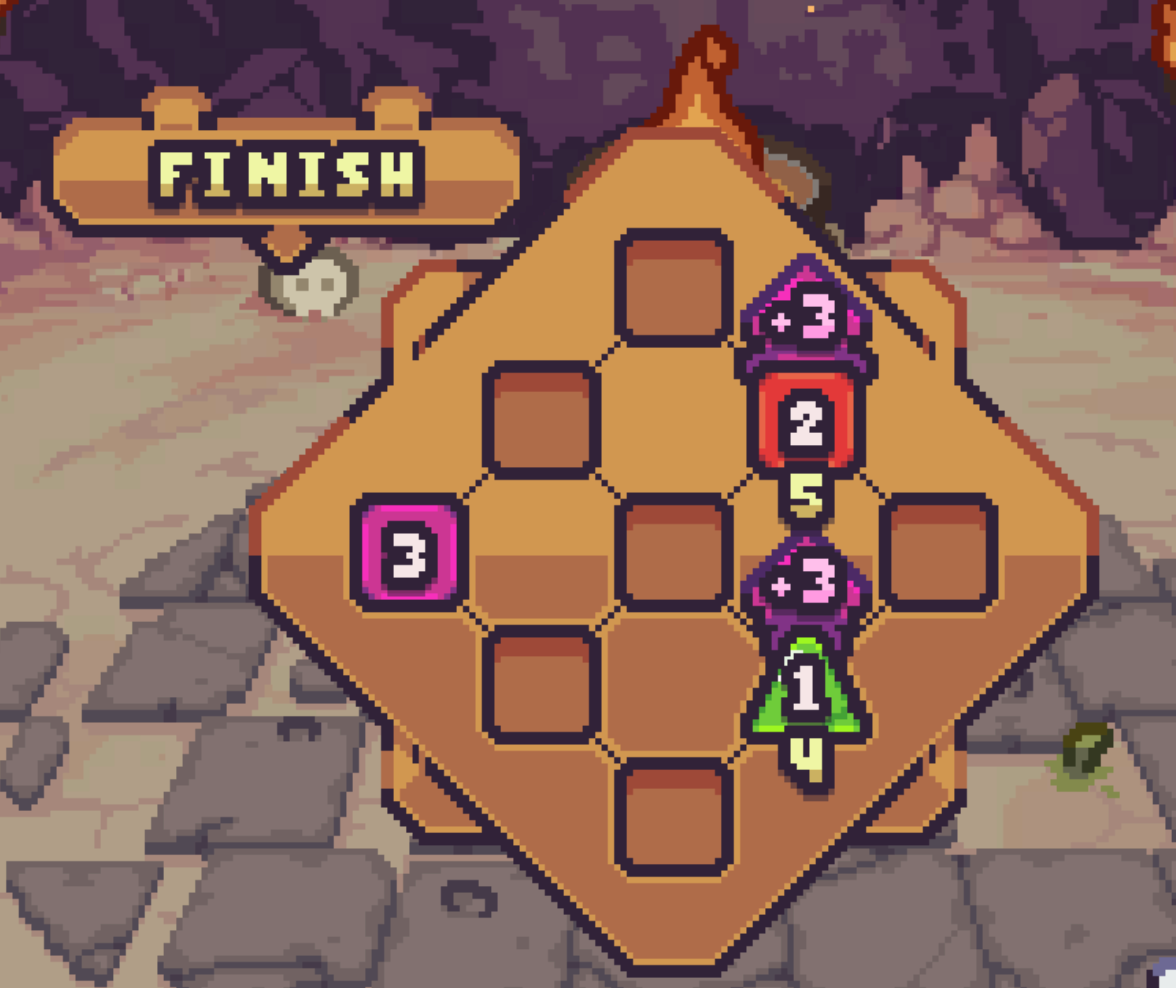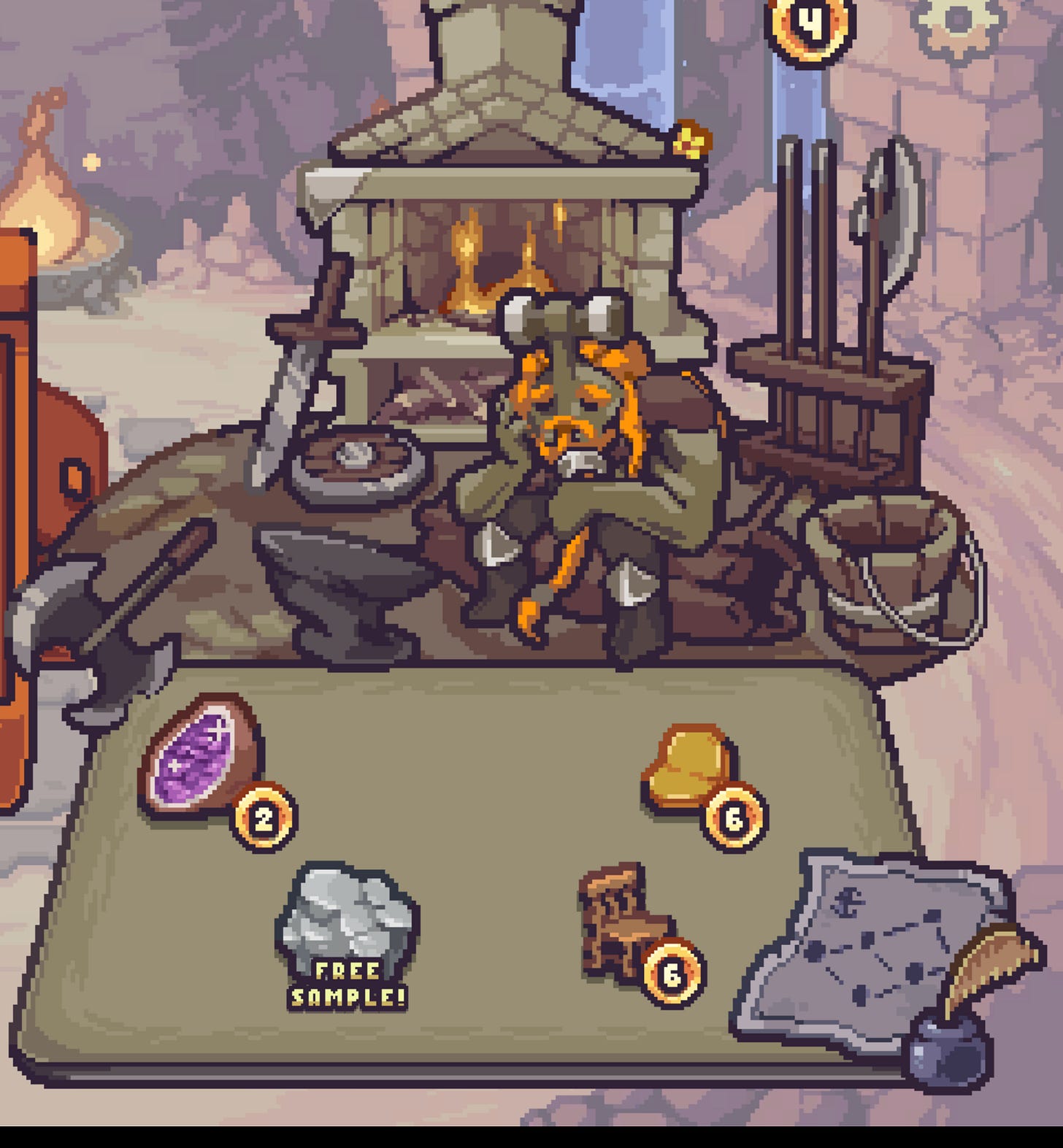Complexity Challenges in Die in the Dungeon
Missing the Trees for the Branches
What is Die in the Dungeon?
Die in the Dungeon is a tactical deckbuilding game where over the course of an hour or so you are collecting dice that will give you special powers to attack, defend, and defeat your opponents. Every turn you draw a handful of dice that you have to combine to efficiently dispatch your enemies, and after every battle you will be offered a new dice to add to your collection to level up your collection.
I really like Die in the Dungeon. It’s a great system, the theme and art style are cohesive, and the moments of storytelling feel correctly tuned. Allowing the individual dice faces to be “normal” (digits) and letting the dice color to describe the ability, instead of having wacky dice faces you can trade in and out, seems to offer a simplicity that is fun and dynamic to engage with. This simple concept hides a maximalist design with so many competing ideas that creates a system that’s hard to learn.
Why Deckbuilders (Dicebuilders?) are fun
Unfortunately deckbuilders aren’t just about that gameplay system. They’re also about how the deck evolves over time and how much better you get at making your deck more efficient.
It's hard to explain exactly why deckbuilding style roguelikes are fun. It's the alchemy between understanding probabilities and constructing a collection of items that can work together over time.
It harkens back to the idea of playing cards or trading cards. Opening up packs, building your deck, leveling up your cards and your knowledge in tuen with each other. It’s all of that within a single player package that you can play over and over again.
The Mechanics of Deckbuilding Growth
I think of deckbuilders in physics-y terms. Your deck efficiency is “velocity”, how fast you can beat the enemy. Your ability to improve your deck is acceleration. The faster you accelerate (the better dice/cards you pick for your deck) the further you’re able to go. But there’s one more! There’s also the rate of acceleration, or how fast you are accelerating over time, which is your rate of learning.
This is super theoretical, but is a lot of the secret sauce of these games. They want to create a learning spiral that teaches players how to get better at the game over time! The reason games need to be randomized is it forces players to learn underlying principles about the game instead of copying a successful tactic.
The Complexity of It All
The challenge with all of this is that your rate of change is driven by complexity and players’ ability to understand that complexity.
Slay the Spire is a complex game. As a simplistic representation, it has
Card Abilities
Relic Abilities
Branching Paths
Character Abilities
Enemy Abilities
But Die in the Dungeon is even more complex:
Dice
Dice Faces with different distributions
Die Abilities (x2)
Relic Abilities
Branching Paths
Enemy Effects
Character Ability
On a simplistic level there are 3 more elements of complexity. We can debate whether or not these are accurate representations, but Die in the Dungeon is more complex than Slay the Spire. Because complexity scales exponentially, 3 extra components might make the game 8 times more complex instead! And something being 8 times more complex means it’s 8 times harder extract information from the game.
And that causes frustration. I’ll hit an early decision and I’m not sure what I need to optimize knowing that my choice might not be relevant further in the run. And then even though it’s fun picking between those abilities or store items, it’s less fun knowing I won’t learn about the success of my choice for a while.
That decision might not matter until a long time in the future. It can make even the fun moments in the game feel like being surrounded by fog. The amount of time it takes to go back and learn is incredibly tough. And it feels less like exploration and more like grinding. I don’t want the game to be easier I want more tools to understand what I’m doing wrong.
Finding Ways to Reduce Complexity
Now, it’s possible that all of this complexity is intentional. This could be a high skill game that simply requires the deep time investment to get good at it. I’m skeptical of that because other games that are equally complicated, like Wildfrost or Slice and Dice found ways shave off complexity.

Both games limit how many options so it’s clear what changes you’re making to your deck and what impact they’ll have. And Wildfrost, while it allows you to modify cards, only gives you a limited number of modifiers to select and doesn’t allow you to change or remove those modifiers later.
Contrast this with Die in the Dungeon which will give you dice with multiple modifiers, offer ways to both modify them further and also remove modifications at various points. Or how in Shogun Showdown you can modify the cards extensively, but you only get to pick 4 total over the course of the game.
Streamers and Enthusiasts
Do all these games need all of this upfront complexity? this complexity all need to be present up front? Are the concepts included because they enhance the experience or because they feel like necessary elements for any tactical game?
It doesn’t surprise me this game is a hit with both streamers and also tactical roguelike enthusiasts. The game is incredibly interesting and the tactical complexity is blunted significantly by the heuristics built up by those players over time. But it’s also not surprising why even the excellent ones can occasionally struggle to find a broader audience.





